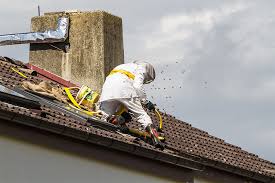Birds, while often delightful to observe, can become a nuisance when they decide to make your property their home. From creating noise disturbances to causing structural damage, birds can present several challenges for property owners. Bird proofing is an essential practice to protect your property and maintain a peaceful environment. In this article, we will explore effective bird proofing techniques to safeguard your space in a professional and effective manner.
Why Bird Proofing is Important
Birds can be more than just a minor inconvenience. They can cause significant damage to buildings, vehicles, and other property components. Here are a few reasons why bird proofing is crucial:
Health Hazards
Bird droppings can carry diseases, posing health risks to humans. These droppings can also create unsanitary conditions, leading to potential health code violations for businesses.
Structural Damage
Birds can cause considerable damage to buildings. Their nests can block gutters, leading to water damage, while droppings can corrode building materials over time.
Aesthetic Concerns
Accumulation of bird droppings and nesting materials can tarnish the appearance of your property, making it look unkempt and potentially reducing its value.
Noise Disturbances
Birds, particularly in large numbers, can create significant noise, which can be disruptive to both residential and commercial environments.
Effective Bird Proofing Techniques
Bird Spikes
Installing bird spikes on ledges, window sills, and other perching areas is one of the most effective ways to deter birds. These spikes prevent birds from landing without causing them harm.
Netting
Bird netting is an excellent solution for larger areas such as gardens, orchards, and rooftops. This method creates a physical barrier that prevents birds from accessing certain areas.
Ultrasonic Repellers
Ultrasonic bird repellers emit high-frequency sounds that are unpleasant to birds but inaudible to humans. These devices can be an effective deterrent in various settings, including warehouses and garages.
Visual Deterrents
Using visual deterrents such as reflective tape, scare balloons, and predator decoys can help to scare birds away from your property. These visual cues create an environment that birds find threatening.
Bird Gels
Non-toxic bird gels can be applied to surfaces where birds commonly perch. These gels create a sticky surface that birds avoid, thus discouraging them from settling in those areas.
Best Practices for Bird Proofing
Conduct a Thorough Inspection
Before implementing any bird proofing measures, conduct a detailed inspection of your property to identify potential entry points and high-risk areas. This assessment will help you choose the most appropriate methods.
Regular Maintenance
Bird proofing is not a one-time task. Regularly inspect and maintain your bird proofing measures to ensure they remain effective. Replace any damaged equipment promptly to keep birds at bay.
Legal Considerations
Ensure that all bird proofing measures comply with local wildlife protection laws. Some bird species are protected by law, and harming them or disrupting their nests can result in legal consequences.
Professional Help
In some cases, it may be best to seek assistance from professional pest control services. Experts can provide tailored solutions and ensure that bird proofing measures are implemented effectively.
Conclusion
Bird Proofing is an essential aspect of property maintenance that can prevent numerous issues related to health, aesthetics, and structural integrity. By implementing effective bird proofing techniques and adhering to best practices, you can protect your property from the nuisance and damage caused by birds. Remember, a proactive approach to bird proofing can save you time, money, and hassle in the long run.
The Ultimate Guide to Bird Proofing Your Property
